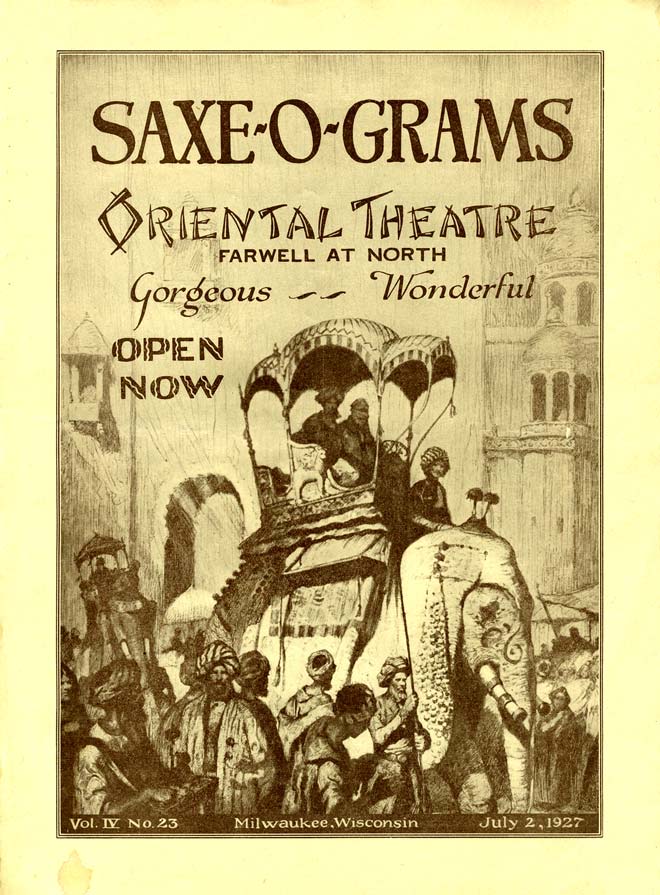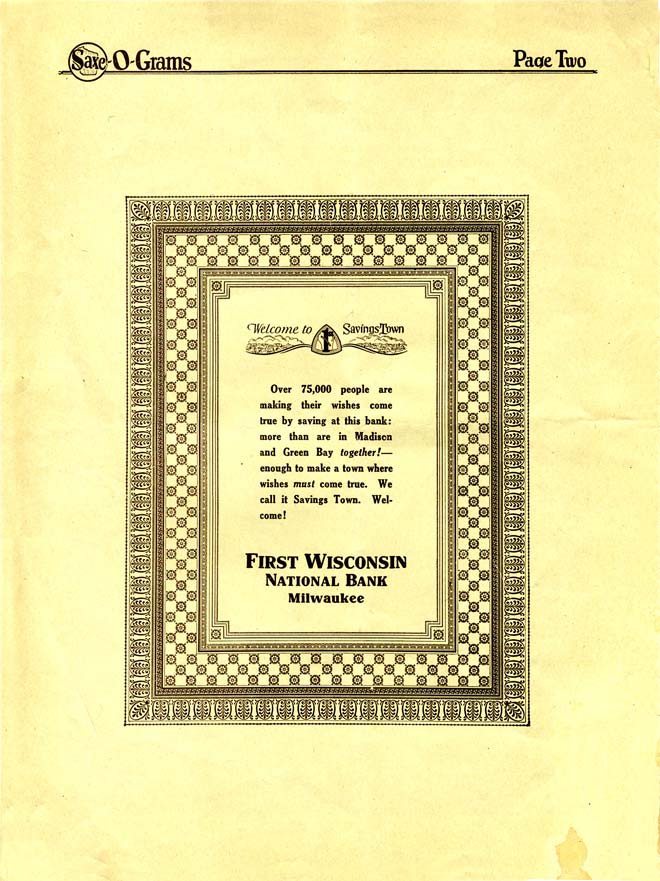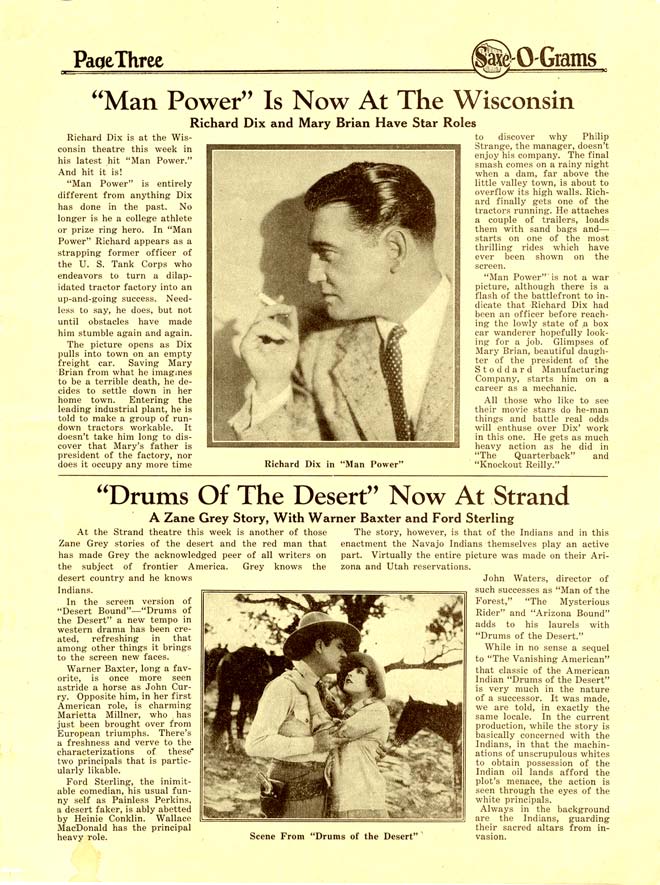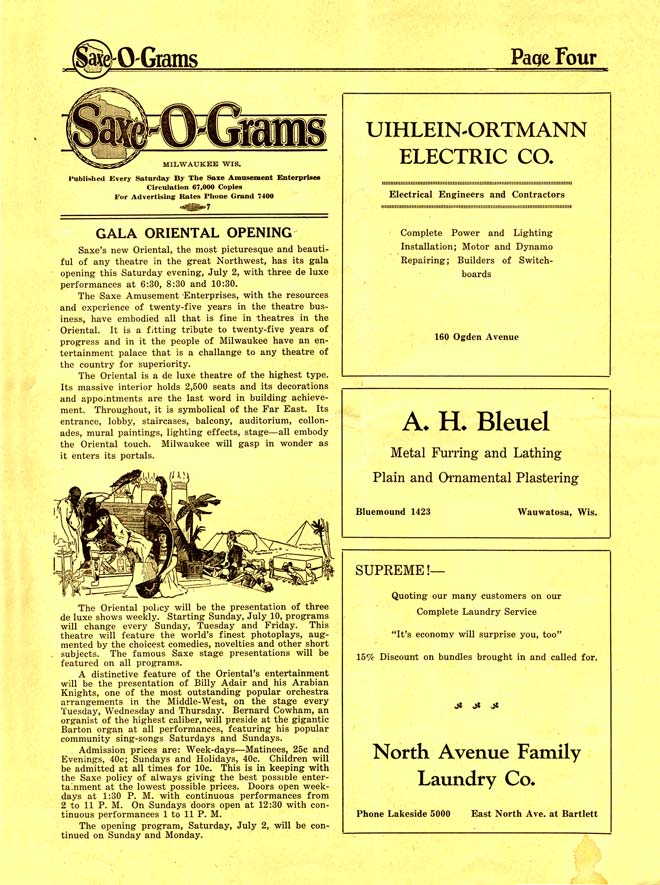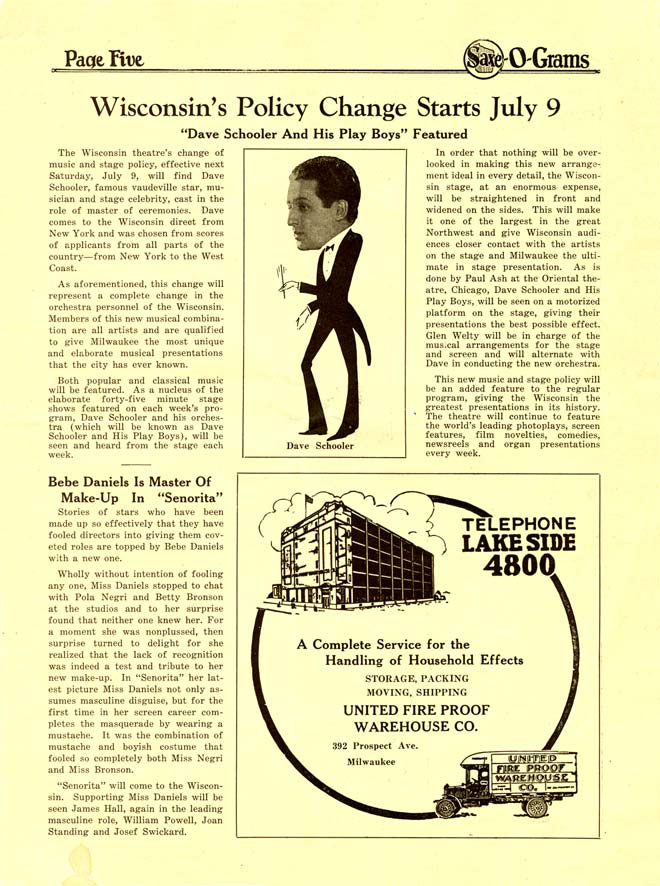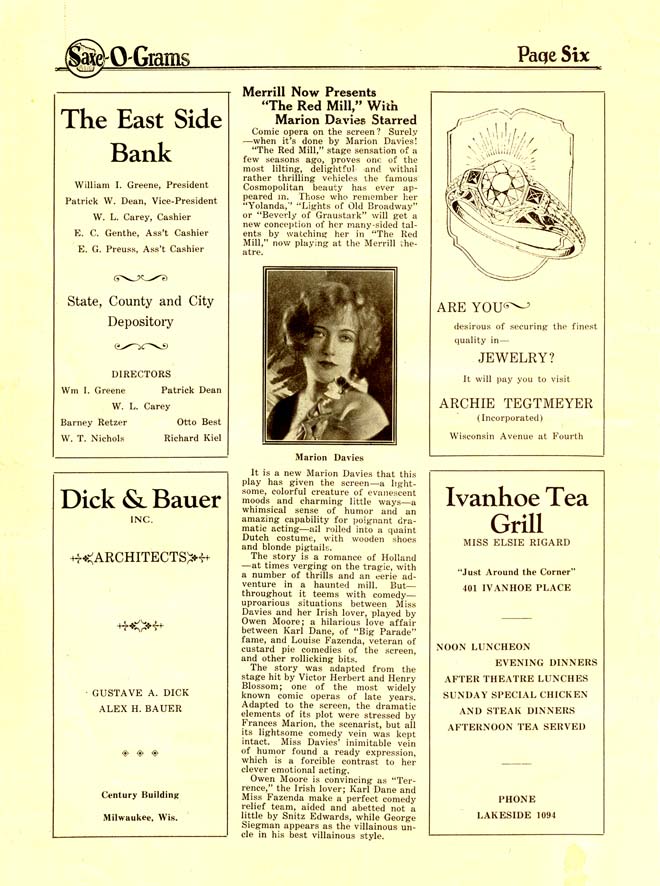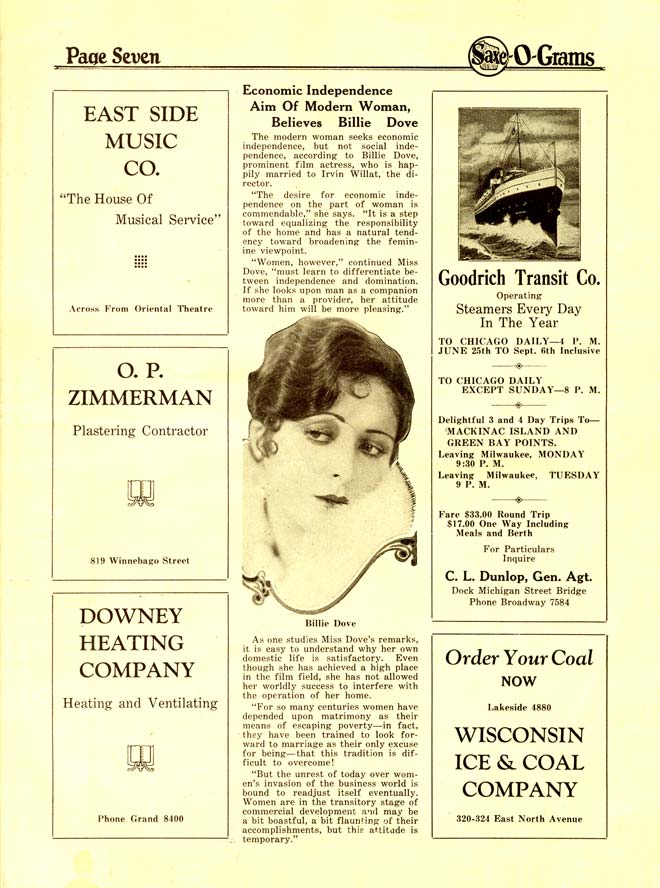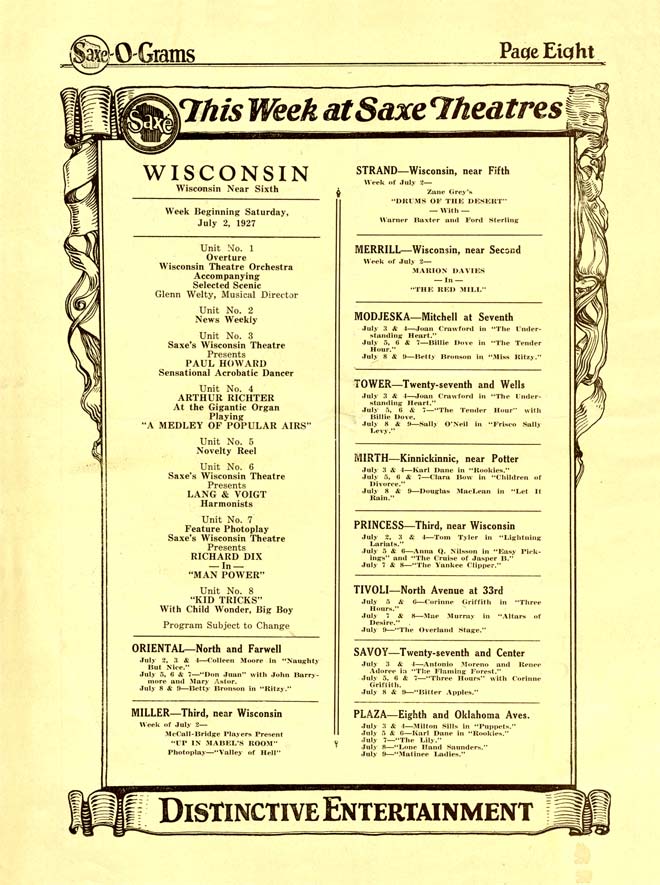Training of Ushers Big Feature
Saxe Service to Patrons Heavily Stressed
Service to patrons, which is maintained at all Saxe Theaters, is one of the innovations in the state which makes a visit to a Saxe theater a truly delightful one.
The uniformed attendants of these theaters are thoroughly drilled in all the requirements of Saxe service before they are permitted to come into contact with patrons. This training calls for courtesy and polite attention, which must be extended in gentlemanly fashion to all patrons. It also prohibits the acceptance by employees of gratuities in any form. No attaché of a Saxe theater is permitted to speak to a patron except in a low tone of voice, reflecting refinement and culture. An usher, when addressed by a patron, must answer immediately in polite and concise fashion, giving the patron the information or assistance desired.
As a patron enters the theater, the uniformed doorman is required to prefix the word “please” in asking for the ticket, must thank the patron in brief, courteous manner. The patron is then directed to one of the three aisles in the theater in a most polite manner, where a uniformed usher, carrying a small flashlight, guides the patron to his seat and offers the women patrons such courtesies as the best of etiquette would provide.
If a patron stops in the lobby on leaving the theater to put on a wrap or coat, the ushers are instructed to assist and to open the door when a patron is entering or leaving the theater.
AID FOR CHILDREN
If a patron stops in the lobby on leaving the theater to put on a wrap or coat, the ushers are instructed to assist and to open the door when a patron is entering or leaving the theater.
Children are given the same careful attention by these uniformed attaches that would be expected from their parents or a chaperone. This has inspired a feeling of confidence among the women in the cities in Wisconsin where Saxe has theaters, who feel perfectly at ease in sending their little ones to view Saxe performances.
But to establish and maintain this service, which was first inaugurated at the Wisconsin theater in Milwaukee, is more of a task than the average person would imagine. At the Wisconsin, a daily school for ushers is conducted, attended by some of many of the best families who desire theatrical careers. Here they are taught the principles of courtesy and service to patrons which are among the basic thoughts in the entertainment world.
SENT TO SCHOOL
Whenever a new theater is opened, the boys who are to be the attendants are carefully selected and then sent to the Wisconsin to the ushers’ school, where they are given a complete course under the direction of James Long and his assistants.
Ushers are graded each week as to deportment, politeness, neatness and other items which either make or cause the discharge of an usher. Any usher falling below 70 percent two weeks in succession is immediately replaced from the waiting list.
Before a young man is permitted to join either staff or school of a Saxe theater, he is carefully investigated. He must come from a good family, possess a good education and show signs of having had good home training. The majority of the best showmen, leaders in the industry, started as ushers.
These are but a few of the reasons for the impression you receive of Saxe attaches upon attending one of the theaters. – Wisconsin News, 1927
Remodeling Stores into Small Theatres
From “Radford’s Details of Building Construction” 1911
Edited by William Radford, President of the Radford Architectural Company, Chicago, Illinois
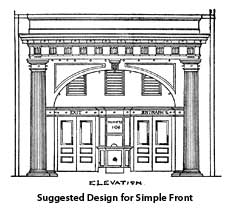

Almost all towns, no matter how small, now have or soon will have a moving picture theatre. The majority of these places find quarters in store rooms, which are required to be remodeled for this use. The room should be at least 18 or 20 feet wide and 60 feet long, the ideal size being 24 by 90 feet. The ceiling height is important on account of ventilation and should be 14 feet, though 16 or 18 feet is better. The room should have side or rear exits which must be marked and the doors hung so as to open out. The store front is always removed and the room closed in with a partition placed about 14 feet back from the front. This gives the wide vestibule which is so necessary in an attractive place. The floor plan shows a good arrangement for an up-to-date moving picture house. Note that each aisle is marked by a small red light placed under glass in the floor. The piano pit is placed below the level of the floor to keep the player out of the line of vision. The sectional view gives a good idea of the raised floor, balcony and ticket office. It will be noticed that the three rows of seats at the rear are above the level of the main aisle.
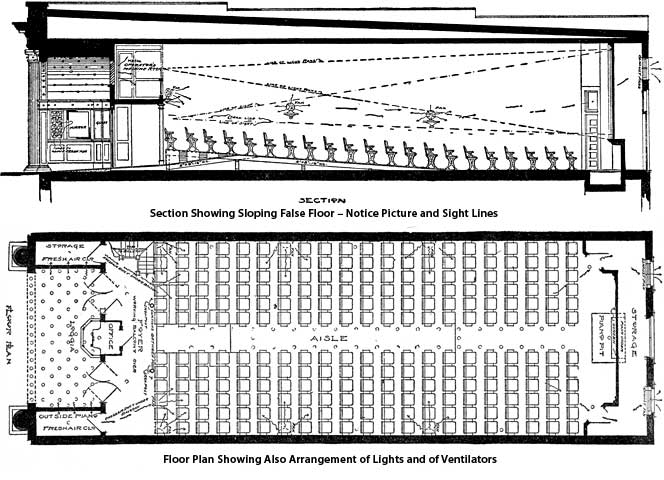
These plans are only guidelines for general use, therefore variations of them may be necessary in some cases to accommodate individual situations accordingly.
The Saxe Boys Gave it to City, 1927
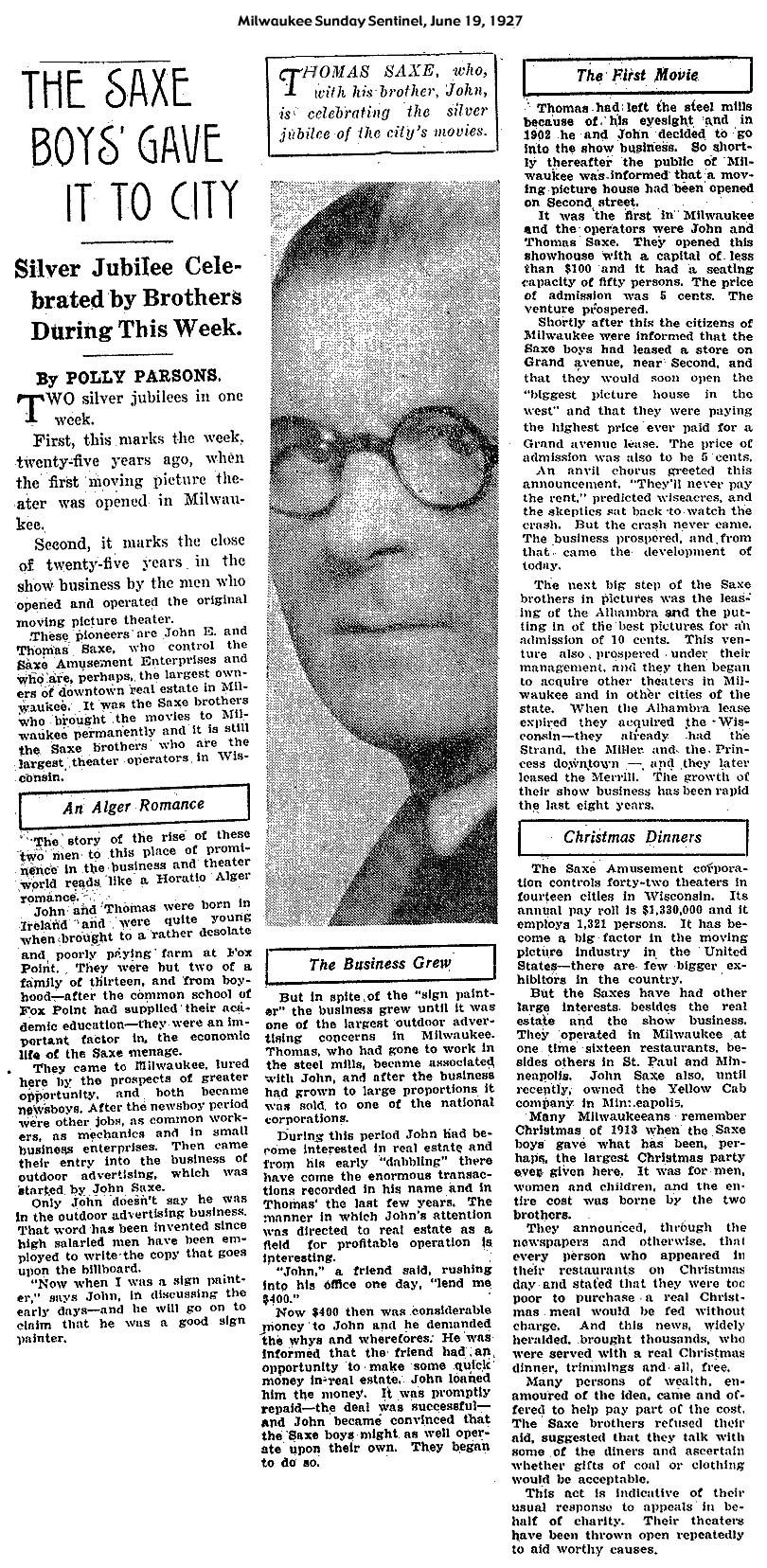
Saxe-O-Gram, Theater Newsletter, 1927
